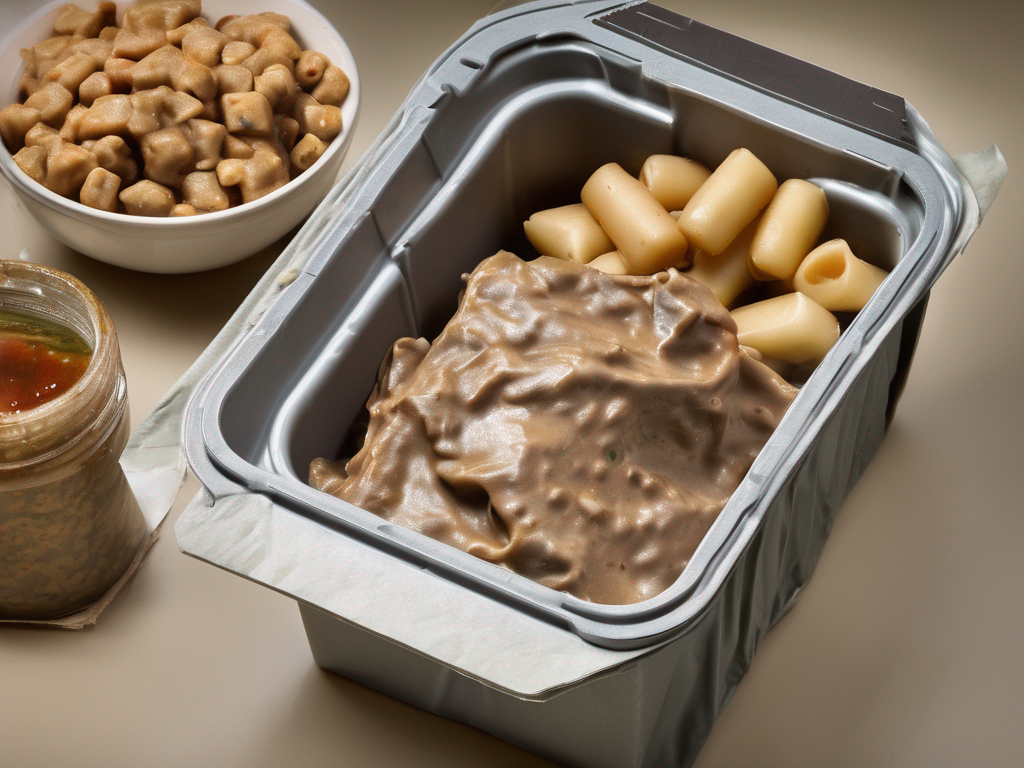
The Shelf Life of Military MRE (Meal Ready to Eat) and How to Extend It
Get Your Free Food Safety Cheat Sheet
30 most common foods with instant answers. Print it and stick it on your fridge—completely free!
The Shelf Life of Military MRE (Meal Ready to Eat) and How to Extend It
In the world of emergency preparedness and military operations, Military MREs (Meal Ready to Eat) play a crucial role in providing quick and convenient nutrition. These self-contained, individual ration packs are designed to withstand harsh conditions and provide essential nutrients to soldiers in the field. Understanding the shelf life of MREs and how to extend it can ensure that these meals remain safe and effective when needed the most. (Military mre meal ready to eat)
Understanding the Shelf Life of Military MREs
What is the Standard Shelf Life of MREs?
- Standard Shelf Life: The average shelf life of a Military MRE is around 3-5 years when stored at temperatures below 85°F (29°C).
- Packaging: The durable packaging of MREs helps in preserving the quality and freshness of the contents.
- Factors Affecting Shelf Life: The shelf life of MREs can vary based on storage conditions, such as temperature, humidity, and exposure to light.
How is the Shelf Life Determined?
- Expiration Date: Each MRE package is stamped with an expiration date, indicating the date until which the contents are expected to remain safe and of high quality.
- Storage Conditions: Proper storage is essential to maintain the nutritional value and safety of MREs.
Signs of Spoilage in MREs
- Inspect the Packaging: Look for any signs of damage, punctures, or leaking.
- Check for Odor: Spoiled MREs may have a foul or rancid smell.
- Visible Mold: Discard any MREs with visible mold growth.
Extending the Shelf Life of Military MREs
Proper Storage Tips
- Temperature: Store MREs in a cool, dry place away from direct sunlight and extreme temperatures.
- Humidity: Avoid storing MREs in areas with high humidity, as moisture can promote bacterial growth.
- Rotation: Use the "first in, first out" method to rotate older MREs and consume them before newer ones.
Vacuum Sealing
- Benefits: Vacuum sealing can help extend the shelf life of MREs by removing oxygen from the packaging, which slows down the oxidation process.
- Equipment: Invest in a vacuum sealer to properly seal individual MRE packages for long-term storage.
Freeze-Drying
- Process: Freeze-drying involves removing moisture from food items, resulting in lightweight, shelf-stable products.
- Benefits: Freeze-dried MRE components can have an extended shelf life of up to 25 years when stored correctly.
Inspection and Testing
- Regular Check-Ups: Periodically inspect stored MREs for any signs of damage, spoilage, or expiration.
- Taste Testing: While not recommended for safety reasons, a taste test can help determine if the MRE is still palatable.
Conclusion
Military MREs are a valuable resource in emergency situations and field operations, providing essential sustenance in a compact and durable package. Understanding the shelf life of MREs and implementing proper storage practices can ensure that these meals remain safe, nutritious, and effective when needed. By following the tips provided in this guide, you can extend the shelf life of MREs and be better prepared for any situation that may arise. Remember to always prioritize food safety and quality when dealing with emergency rations. (Military mre meal ready to eat)
Authoritative Food Safety References
These agencies and university labs inform every tip and health precaution we publish.
USDA FoodKeeper – Cold Storage Guidelines
Official refrigerator, freezer, and pantry timelines maintained by the U.S. Department of Agriculture.
Visit USDA FoodKeeperFDA Produce Safety Rule & Grower Guidance
Field-to-fridge handling practices that prevent contamination of fruits, vegetables, and leafy greens.
Visit FDA Produce SafetyCDC Foodborne Illness Prevention Hub
Surveillance-backed guidance on pathogens, symptoms, and steps to reduce foodborne illness risk.
Visit CDC Food SafetyUC Davis Postharvest Technology Center
University research detailing optimal storage atmospheres for produce after harvest.
Visit UC Davis PostharvestPenn State Extension – Home Food Preservation & Safety
Peer-reviewed extension bulletins on safe canning, chilling, and reheating practices.
Visit Penn State ExtensionGet Your Free Food Safety Cheat Sheet
30 most common foods with instant answers. Print it and stick it on your fridge—completely free! Want more? Upgrade to the complete guide with 70+ foods.
Scan your food directly and get instant safety info using our AI-powered camera feature.